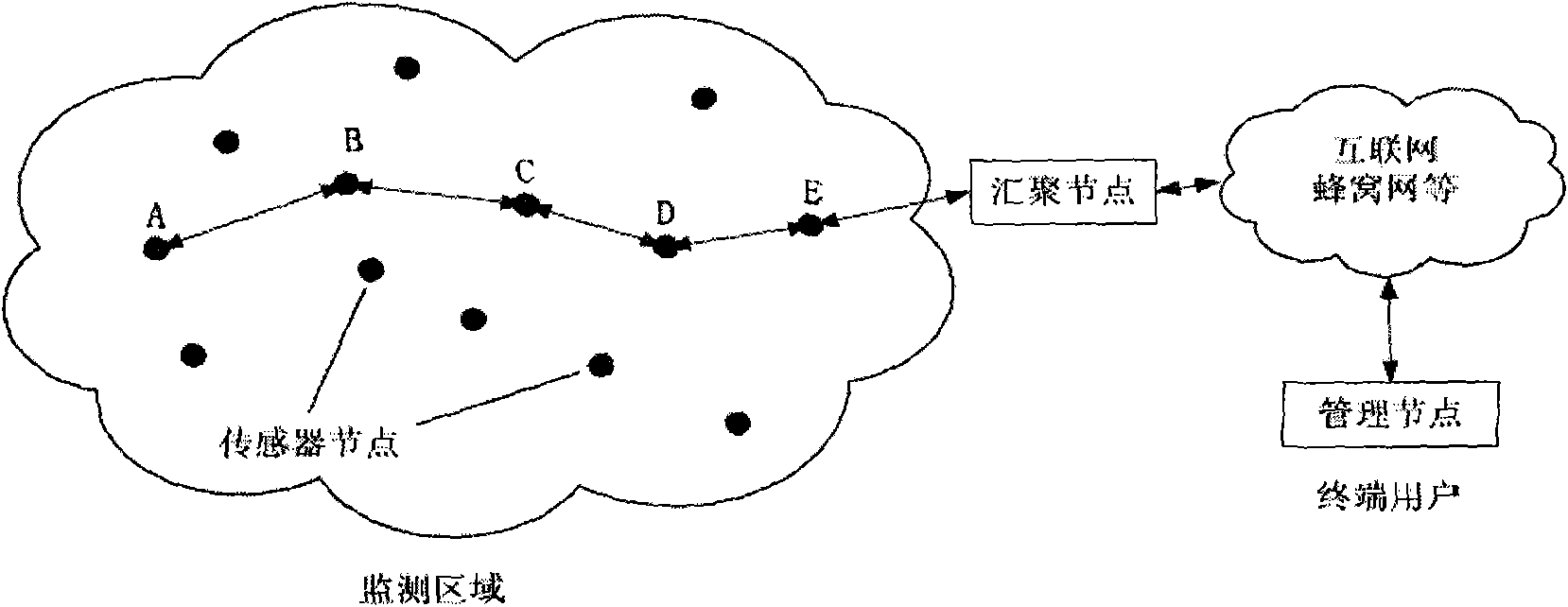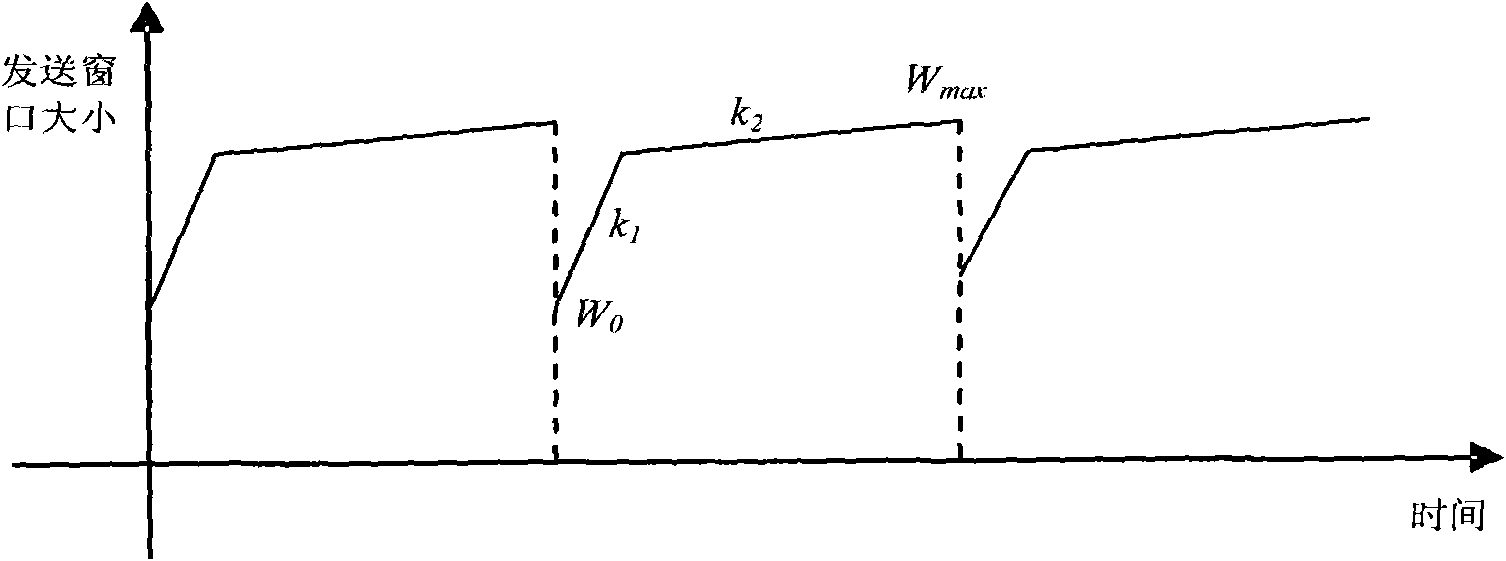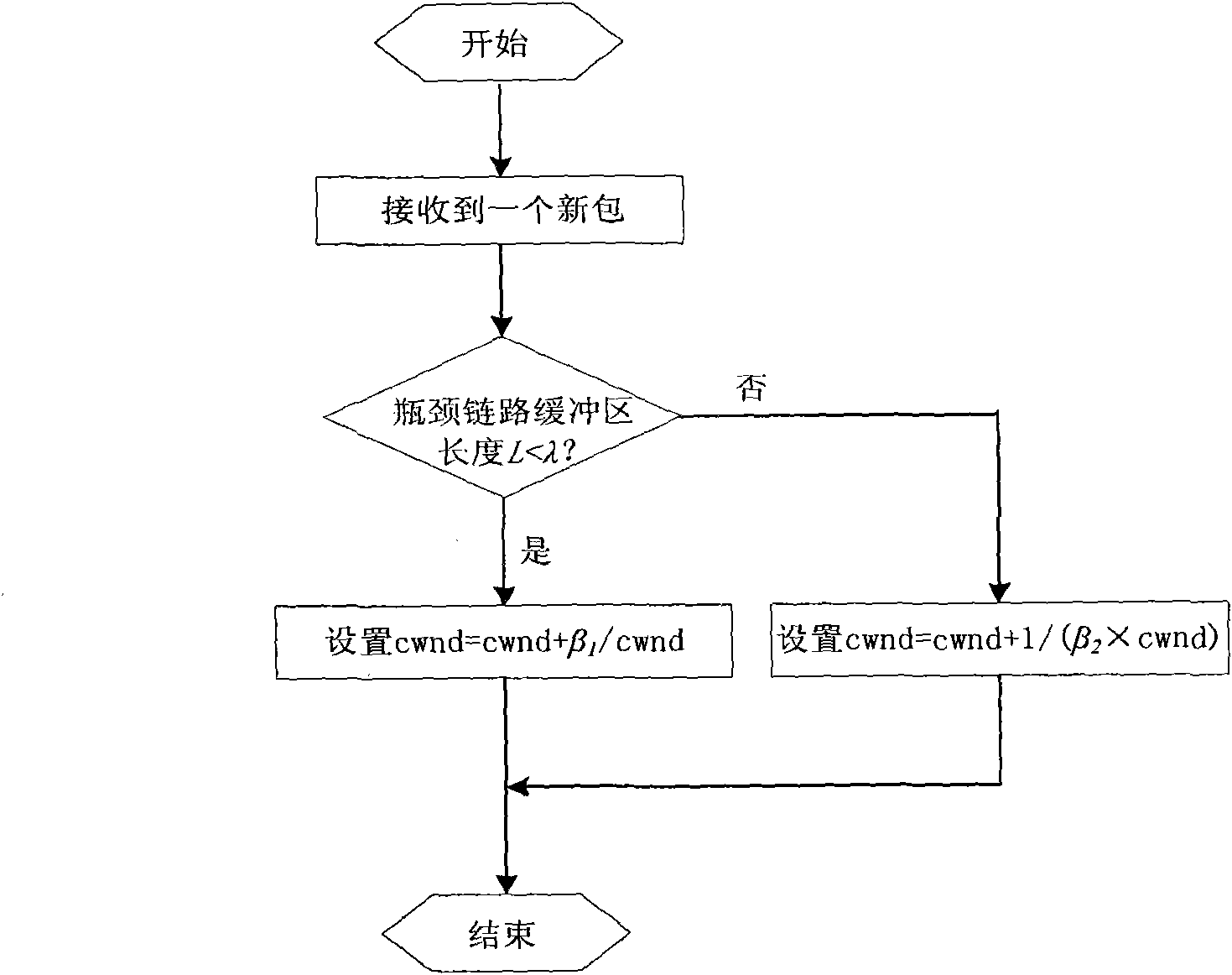Method for controlling transmission of sink nodes in wireless sensor network
A wireless sensor and aggregation node technology, applied in wireless sensor network protocol design, wireless network field, can solve problems such as low performance, large bandwidth delay product, link bandwidth asymmetry, etc., to improve throughput, improve stability, The effect of less fluctuation in the send window
- Summary
- Abstract
- Description
- Claims
- Application Information
AI Technical Summary
Problems solved by technology
Method used
Image
Examples
Embodiment Construction
[0019] The technical solutions of the present invention will be further described below in conjunction with the accompanying drawings and specific implementation examples.
[0020] In the present invention, based on the available bandwidth measurement method of the ACK packet arrival interval, by measuring the time interval of the confirmation packet arrival and taking the average value of the time interval, the available bandwidth is calculated, and then the available bandwidth obtained by the filter is used to filter the measured available bandwidth to eliminate errors. This results in a more accurate measurement of available bandwidth. The specific method is: assuming that the size of the data packet is P, after passing through the bottleneck link, the data packet forms a certain interval, and the time interval between the reply ACK packet after reaching the destination node is Δt 1 , Δt 2 , Δt 3 ..., Δt n-1 , Δt n , then the available bandwidth measurement is:
[0021...
PUM
 Login to View More
Login to View More Abstract
Description
Claims
Application Information
 Login to View More
Login to View More - R&D
- Intellectual Property
- Life Sciences
- Materials
- Tech Scout
- Unparalleled Data Quality
- Higher Quality Content
- 60% Fewer Hallucinations
Browse by: Latest US Patents, China's latest patents, Technical Efficacy Thesaurus, Application Domain, Technology Topic, Popular Technical Reports.
© 2025 PatSnap. All rights reserved.Legal|Privacy policy|Modern Slavery Act Transparency Statement|Sitemap|About US| Contact US: help@patsnap.com



